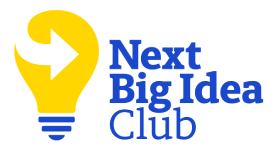Below, co-authors Melissa Valentine and Michael Bernstein share five key insights from their new book, Flash Teams: Leading the Future of AI-Enhanced, On-Demand Work.
Melissa is Associate Professor of Management Science at Stanford University, where she codirects the Center for Work, Technology, and Organization. Michael is an Associate Professor of Computer Science at Stanford, where he is a Bass University Fellow. Both have had their work featured in major publications, including the New York Times and Wired.
What’s the big idea?
Have you ever wished that you could assemble your version of The Avengers at work? That’s basically what it means to build a Flash Team. Bringing together the right set of experts at exactly the right time to tackle a tough, important job has become a realistic, repeatable goal for leaders today—unlocked by powerful new technological tools that enhance organizational strategy.

1. There are experts everywhere, all the time.
One of the biggest mindset shifts of flash teams is recognizing that expertise is abundant. Managers have been trained to think that hiring an expert takes weeks of job postings, interviews, and approvals. But whatever expertise you need, you can probably access it in minutes, not months.
A founder of a $35 million start-up told us that he had a client who needed to reimagine how to sell a beloved toy truck after their retail stores shut down. Using the flash teams approach, he quickly found a former McKinsey partner in retail, someone from Toys R Us corporate development, and a supply-side expert from Amazon. They had never met before, but they delivered so well that the client rehired them to manage execution.
We’ve demonstrated that same speed in our classrooms. I’ve asked students to hire a professional designer from Upwork and get a finished team logo in under 80 minutes. Every time, they’ve done it.
“Technology lowers the transaction cost of finding, vetting, and convening experts.”
Leaders can stop assuming that talent is a bottleneck. Once you recognize expert abundance, you can start designing projects differently: taking on bolder challenges, experimenting faster, and pulling in expertise at the moment it’s needed. This shifts managers from fearing scarce or hard-to-find talent to orchestrating abundant talent.
This is possible because modern online labor markets and digital platforms are the infrastructure. They provide access to millions of professionals worldwide, reputation systems that help you assess quality, and fast contracting and payment systems that remove friction. Technology lowers the transaction cost of finding, vetting, and convening experts, so leaders can act on the abundance that’s already available. We live in an economy of expert abundance. With the right mindset and tools, you can assemble the right people at exactly the right time.
2. AI can help you design teams and organizations.
The amazing thing about having flash teams is that, because they are created using computing, you suddenly have the ability for AI to help design your organization: how to staff, how to work together, and when to adapt. As a result, we can solve lots of problems that are organizational and managerial blind spots. We’re not talking about theory here, but about practical dials that managers usually leave on the table.
AI can influence how our teams and organizations are structured and function:
- How should this team be collaborating?
- Should we have horizontal leadership or enforce a steep hierarchy?
- Who should even be on this team, or are right for this project?
Many of the decisions needed to build an effective team can be supported by AI insights. As people, we tend to under-explore. We don’t try enough options. We try a couple different things, see what seems to work, and then we say, “Yeah, seems good.” But this is how we fall into a rut.
With AI plus flash teams, you instrument the basics and give the system permission to propose small experiments, such as:
- Try a DRI for decisions this week.
- Rotate one member for fresh eyes.
- Shorten stand-ups and add a mid-week asynchronous check.
If it produces improvements, the AI learns to keep it; if it doesn’t help, the AI might toss it. As people join or roll off, the recommendations adapt. These kinds of things give us managerial superpowers. AI-enhanced flash teams can make this possible.
3. Management classics are still classic—just reimagined.
In some ways, flash teams sound like something brand new—on-demand experts, AI tools, dynamic org charts—but the management classics are still classics. They just look a little different in this new world.
Take project management. In our research, we studied hundreds of flash teams. The best teams didn’t succeed just because they had the right experts. They succeeded because a team manager made sure the pieces came together: synchronizing handoffs, keeping information transparent, making sure the client’s vision stayed connected to the team’s daily work. One engineer told us bluntly, “The PM makes or breaks the team.”
Or leadership. In one of our experiments, when a client suddenly changed requirements mid-project, the teams that thrived weren’t those with the flashiest experts. They were the ones where a leader stepped in to integrate different perspectives, rebalance priorities, and help the group adapt quickly. Leadership—the ability to inspire, coordinate, and adapt—still matters, maybe more than ever.
“Flash teams give new life to timeless management skills.”
And integration. Even with great role clarity, unexpected complexity shows up every day. Someone doesn’t deliver, or two roles conflict, or the work comes in messy. That’s the residual complexity that only managers can resolve. In one case, a team writing poems for a card game had beautiful but mismatched outputs. They quickly elevated one person into the role of “Chief Poetry Officer” for a day—just long enough to integrate the parts into a coherent whole. That’s hierarchy reimagined: temporary, lightweight, but crucial.
With flash teams, digital tools support classic management functions. Platforms like Slack or project dashboards give managers real-time visibility across the whole team. AI-enabled systems can help leaders spot when handoffs are slipping, recommend workflow adjustments, or even simulate different team configurations before you commit. The human arts of leadership, integration, and project management get amplified.
Flash teams give new life to timeless management skills. The tools may be modern, but the fundamentals—clear leadership, good coordination, thoughtful integration—are still what make or break a team.
4. AI org simulations and organizational what-ifs.
Flash teams open this incredible opportunity to have a “what-if machine”:
- What if we organized the team this way? Would the team work better or worse?
- What if we brought this person onto the team—would it help?
- What if we split up into two smaller units? Would we move faster and make better decisions?
Imagine being a manager and getting a fast, concrete preview of what might happen: what could go wrong, what’s likely to improve, and what might get worse. This is possible through the clever application of large language models, such as ChatGPT. We can use this new generation of AIs to create lightweight simulations of your organization. Imagine digital twins: little digital copies of everyone on your team that act and behave roughly the same way that they do. With those simulations, you could put the digital twin of your team or org into different configurations—reconfigure the team, change collaboration rules, and more—and see if they coordinate more smoothly.
This is possible through generative agents. These are AI agents that simulate people based on a bit of knowledge about them. Maybe you run a little interview with everyone in the team and use that to create a digital twin of them, or maybe everyone agrees to use a slice of your historical Slack or email to create digital twins of your team. Once you have that, your team can become this dynamic, queryable object: you ask a question, run a quick scenario, and watch how it plays out. It’s a rapid, plausible rehearsal—a “what if.”
“This is possible through the clever application of large language models, such as ChatGPT.”
In this way, we can also catch early warning signs for a team. It allows leaders to flag whether a team is likely to fracture—to stop wanting to work together—by using about 60 to 90 seconds of their chat. A tiny glimpse into how people communicate and coordinate can reveal surprisingly strong signals. Suddenly, we can predict whether this team will work as great long-term partners, or if we should reconsider them. It’s almost like organizational speed dating.
Imagine having the superpower to create organizational “what ifs.” It gives you this amazing managerial sandbox. Flash teams turn your org into a safe, queryable “what-if” machine, so you can prototype structure before you commit to it.
5. You already have a flash teams toolbox.
You don’t need to have a PhD in artificial intelligence to do these things. You can do it today, without any custom software. All you need is the idea and access to a modern large language model like ChatGPT. It turns out that everything we had to spend months coding manually can be generated on the fly by an LLM if you can just be specific about what you need.
We were discussing earlier how AI can help you design or refine your team. One option is to get an advanced degree in computer science and learn about networks of multi-armed bandits, then build it internally. But the other option is to just keep a spreadsheet where you’ve been keeping track of how things are going, and the management decisions you’ve been making so far. Input that into GPT-5, ask it to implement this approach, and it will do all the math for you.
Enjoy our full library of Book Bites—read by the authors!—in the Next Big Idea App:





























